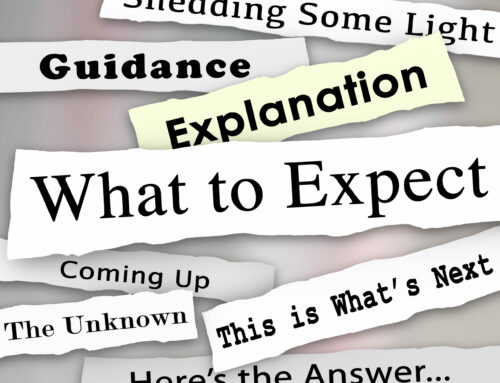In my last blog, I highlighted some of the changes to rules and guidance on pension transfer advice that were initially proposed by the FCA in CP19/25 and confirmed in the recently issued policy statement (PS20/6).
The majority of these changes are to be introduced from 1st October 2020, so we must consider that candidates’ knowledge of PS20/6 will be included and tested in upcoming pension transfer exams. The 2020/2021 syllabus for the CII AF7 exam has a planned release date w/c 3 August (digital) and w/c 10 August (printed). It’s therefore not outside the realms of possibility that the latest rules and guidance could be tested in the October sitting of AF7.
To give a flavour of how the changes announced in PS20/6 may affect the content of pension transfer exams, I will look at the AF7 October 2019 past paper, providing brief commentary on what has changed from this perspective and what you need to be aware of. To keep things relatively short, I will initially look at the short answer questions in this blog and the case studies in a follow up blog.
Instead of repeating the questions and model answers, I would refer you to the full past paper that can be accessed in the link below:
https://www.cii.co.uk/media/10124015/af7_october_2019_eg_v3.pdf
Question 1 – Triage Services
CII feedback highlighted that candidates lacked a detailed knowledge of the triage process, which resulted in lost marks. Triage plays a key part in pension transfer advice, and an understanding of the triage process is vital to candidates.
The FCA highlighted the usefulness of triage services in PS18/20, providing guidance that “triage should be educational and provide generic, balanced information on the advantages and disadvantages of a pension transfer.”
Triage is an educational process intended to help an individual decide whether to proceed with the pension transfer advice; it’s not a ‘light touch pre-advice process to filter out cases that would be advised not to transfer’ as some candidates believed. In questions like this, we need to stress the points that this is an ‘education’, should be ‘impartial’ and the information is ‘generic’; in fact we are seeing a rise of firms using 3rd party triage services to maintain this impartiality and ensure the advice boundary is not crossed.
Further to part (b) of the model answer, PS20/6 now clarifies that decision trees and RAG-rated questionnaires should not be used as part of triage as these tools carry a high risk of crossing the advice boundary for pension transfer advice. I wholly expect that Triage and the soon to be introduced Abridged Advice will be hot topics for future papers, so make sure you are up to speed with each of these areas.
Question 2 – GARs
A technical amendment to be aware of in relation to this question is a change in the glossary definition of Guaranteed Annuity Rate (GAR) to clarify that it includes retirement annuity contracts (RACs) that contain a minimum guaranteed income.
In practice, this change of definition is limited and excludes fixed or guaranteed benefits in an individual pension contract that replaced similar safeguarded benefits under a defined benefits pension scheme, entitlements to a lifetime income paying a GMP that results from contracting out of SERPS and a defined benefit minimum that accrues or may accrue at the same time as money purchase benefits under a pension arrangement.
In the context of our question, this does not impact on the model answer but the change of definition is something you should be aware of. Correctly identifying whether an RAC contains safeguarded benefits is critical as this affects the permissions required to advise and need for TVC, APTA and PTS check.
Question 3 – Scheme Funding
This was a classic ’list of the factors’ type question and you’ll be glad to hear that the latest FCA policy statement has no impact on the content. I will therefore digress a little just to comment on the general feedback. The CII noted that candidates failed to “identify the factors specific to the benefits held within the scheme”. It’s easy to get tunnel vision in the exam, thinking only about generic factors such as the employer covenant and scheme funding plan in this example. However, a good tip before moving on to the next question is to step back and ask yourself how your answer specifically relates back to the subject (Shaba) or detail that you are given in the question. If you have only listed generic factors, you are unlikely to get top marks.
Question 4 – Calculation of TVC
This type of question is a sure thing in future AF7 papers and understanding the methodology behind the calculation of both the CETV and the TVC are essential knowledge, as is an understanding of how these calculations differ. In simple terms, think of the CETV as the scheme’s valuation of the secure benefits whereas the TVC is the FCA’s valuation. These are relatively easy and plentiful marks so don’t skimp in this area of knowledge!
PS20/6 introduced a few minor but important changes in the assumptions used in the TVC calculation, which affect our model answer here. The first is the move to a lower allowance for product costs of 0.4% (from the current 0.75%) to reflect the lower costs of investing solely in gilts; you need to know this one.
We also now assume that a male scheme member has a female spouse/partner who is 3 years younger, and a female scheme member has a male spouse/partner who is 3 years older, in a similar way to the calculation of the CETV by schemes.
Finally, whilst the TVC still discounts back to date of calculation using gilt returns, if you really want to highlight your depth of knowledge, you could expand to state that the rate of return used during accumulation is now based on the 5- to 10-year UK FTSE Actuaries Index or the 10- to 15-year index (from October he 5- to 15-year index can be disregarded).
I hope this blog has given you a little insight into the impact that PS20/6 could have on the short answer questions at the start of the AF7 paper. Remember that this is very limited and only deals with specific subjects in the October 2019 sitting, so I would urge you to look at the latest regulatory rules and guidance in full as this represents significant change to the status quo.
I hope you will join me in part 2 of this blog, where I will look at the case study questions from the same paper.






